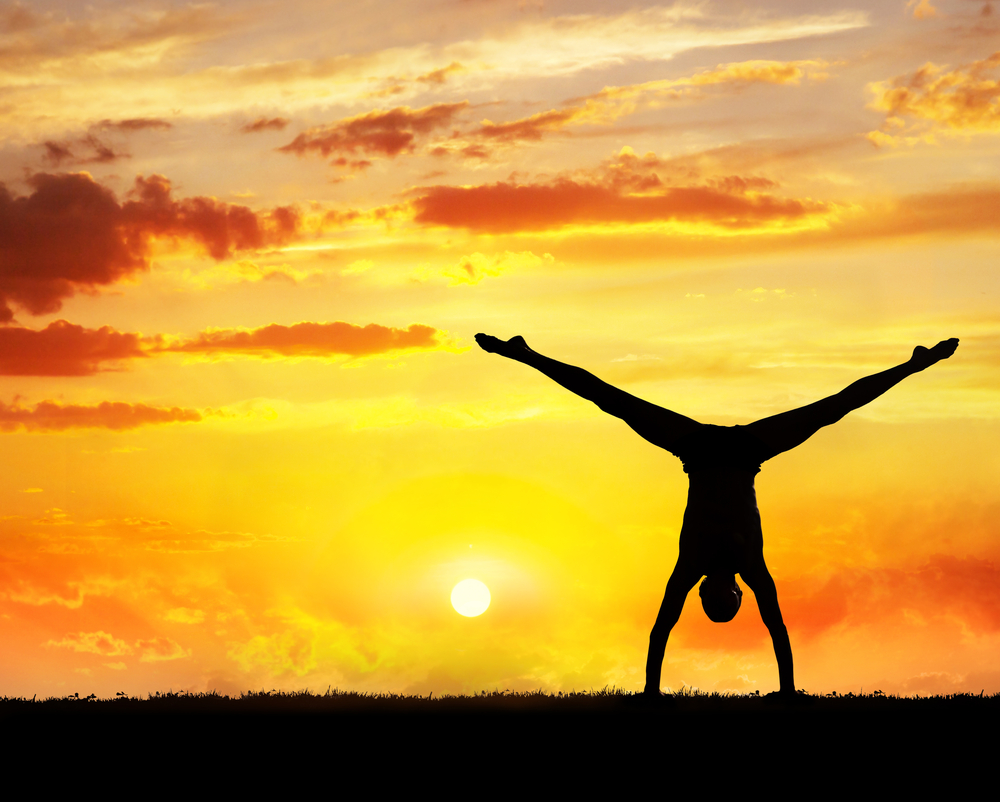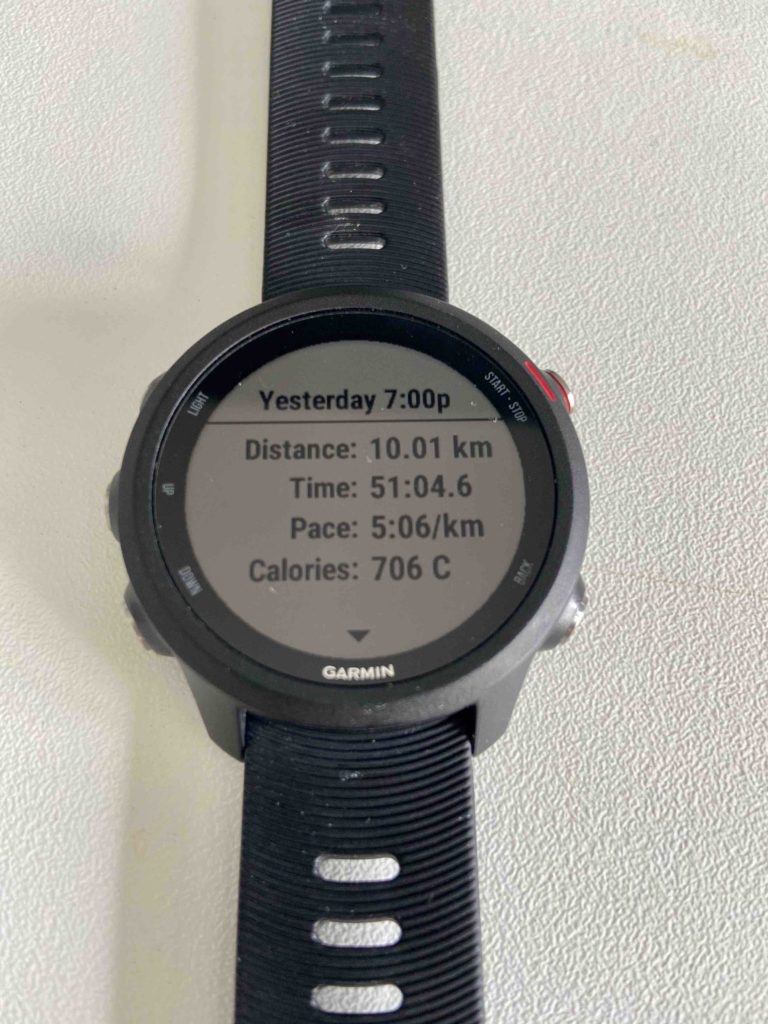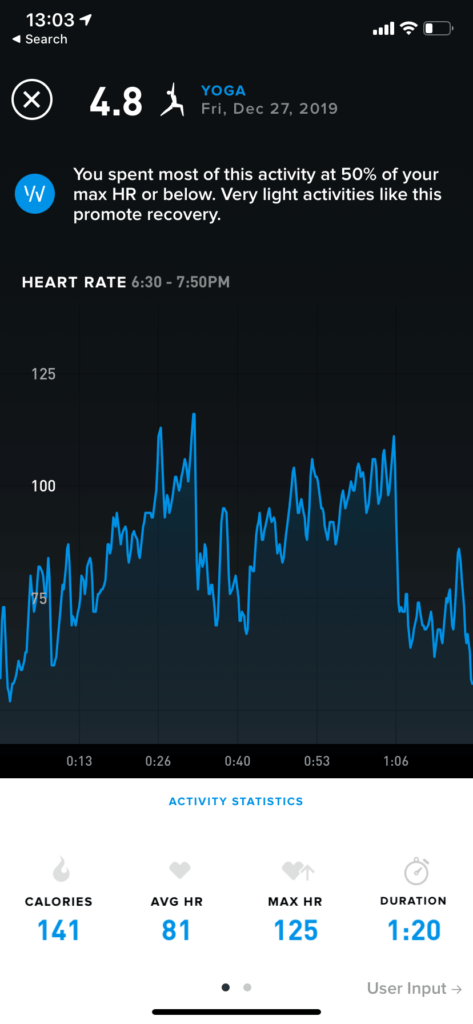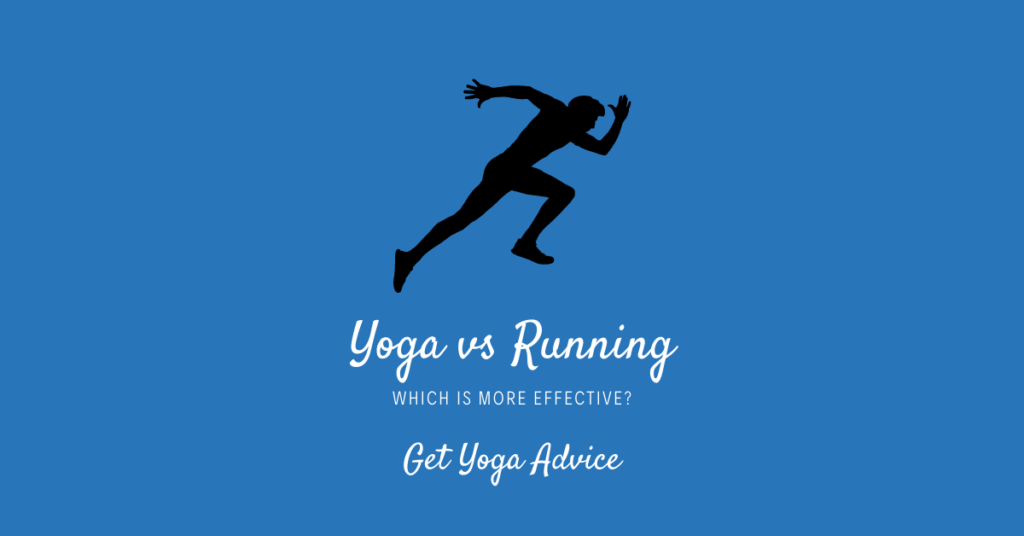An individual can keep fit in many different ways. Two popular options are yoga and running. So when it comes to yoga vs running which is healthier?
Having spent time training for marathons and at yoga retreats and workshops, I can vouch for both practices having their strengths and weaknesses. It really depends on what your fitness goals are and your experience level.
In this article, I explain the pros and cons of both forms of exercise and how I incorporate both into my training schedule. I also explore which pursuit borns more calories using smartwatch and an advanced fitness tracker.
Contents
Benefits of Running

I love running because it’s a simple exercise that doesn’t require much equipment or knowledge. All that you need is sportswear, a watch, a decent pair of trainers and a place to run… typically outdoors!
Running is good for your body since it allows you to burn many calories within a short period. You get to spend time outdoors and you can run with others or by yourself. Not every run should be fast either, it’s fine to run really slow. In fact, it’s recommended if you’re training for longer races like a half marathon.
I like running in the morning or evening when the weather is cool. In the morning, you often feel more energetic since you’ve not started the day’s activities. Running in hot weather is more challenging due to dehydration.
I run in the evenings too, but it’s harder to unwind and fall asleep if I’ve spent an hour running at a fast pace. Harder workouts get my heart rate up, in excess of 150 BPM.
Running can be a challenging activity, especially when starting off.
Over the years, I’ve suffered with shin splints and ankle issues as I wasn’t conditioned enough for hard or longer runs. I learnt the hard way that it’s important that runners replace the calories they consume unless weight-loss is a goal.
Also, invest in a good pair of trainers – I recommend Hoka, Saucony or Brooks – and consume enough protein for recovery.
Pros of Running
- It’s an easy way to burn calories.
- Does not require training or teacher, unless you’re serious about fast running times.
- You can run anywhere, any time… assuming a little rain or snow doesn’t put you off.
Cons of Running
- If you haven’t run before, it can take a while to build up fitness.
- It’s weather-dependent.
- Hard on the ankles and legs.
- Dedicated trainers or runners are expensive… expect to pay $200 or more.
Benefits of Yoga

Yoga provides similar fitness benefits to running, but it might take a longer to see the results. Yoga will also help relax your body and mind and is a whole-body workout. And you don’t need a lot of equipment beyond a matt, some comfortable clothes and quiet space to practice.
The practice of yoga should help improve your strength and flexibility. For instance, certain yoga moves are known to help relieve back pain or build shoulder strength. Running workouts, on the other hand, are unlikely to tax the upper body much beyond the core.
Practice yoga consistently, and you could even develop a meditation or mindfulness practice. Many yoga workouts I’ve attended end with several minutes of lying on the ground focusing on the breath, or Savasana.
Yoga, even hot yoga, doesn’t get my heart rate up as much as running. During a 90 minute session, my Garmin 245 recorded an average heart rate of 130 BPM. Also, when I practice yoga at night, I usually fall asleep much faster than after a run.
These days, my preference is for a run in the mornings and yoga at night. The former fires me up for the day, and the latter helps me unwind. That said, some runners I train with dislike yoga as they find it too slow and restrictive.
Pros of Yoga
- It helps with mental clarity.
- Doesn’t require much space or equipment.
- You can practice at home.
Cons of Yoga
- Requires a trainer or teacher (or an app) to learn basic postures.
- Typically does not burn many calories compared to running.
- Not for everyone.
Running vs. Yoga, Which Burns More Calories?
For this article, I used tested a Garmin 245 smartwatch and also a Whoop fitness tracker. I wanted to gauge how many calories both activities consume and also monitor my heart-rate. I’m 38 years old and six foot, so your stats may vary depending on your fitness levels, weight, metabolism and experience (more on that in a moment).
I’m a relatively experienced runner and didn’t stop during my workouts or require much coaching. I’m newer to yoga, however and sometimes require a little help with poses.
And the results?
I burned 756-calories during a hard (for me) ten-kilometre tempo run and 506 calories during a shorter five-kilometre run. The ten kilometre run took a little under ran hour and the five kilometre run took about 25 minutes.

I burned 141-hundred calories during a 90-minute hot yoga session and about 82 calories during a restorative sixty minute yoga session. Hot yoga also left me feeling more dehydrated due to the intense heat of the studio.

Before declaring running the best calorie loss, a caveat:
I struggled with some of the yoga poses during this session. I am sure a more competent practitioner would burn close to 300-500 calories by holding challenging poses for longer or working through the movements faster!
In short, you can lose more calories from running consistently. However, if you dislike running, hot yoga is a decent alternative for weight-loss. Restorative yoga probably less so.
The Bottom Line: Yoga vs Running

Both yoga and running can help you keep fit and achieve your physical goals.
Typically, a hard run will help you burn more calories than yoga. Therefore, if you are seeking to lose weight, running is more effective. However, a hard run is more taxing on the body in that you’re hitting the ground repeatedly with your feet. It also takes new runners a while to build up endurance and strength for distances longer than a few miles.
Depending on the practice, yoga can act as a restorative pursuit that cleanses your body and relaxes the mind. Or it can serve as a hard workout, for example hot yoga. However, yoga lacks the feeling of freedom that comes with running at a fast pace. And there are no yoga races to take part in… that I’m aware of!
Rather than picking one or the other, I’d suggest finding time to explore both. As a runner, I rely on yoga to compensate for injuries and to improve my strength and flexibility.
Perhaps you’ll run a lot and practice yoga a little or run every few days and go to a yoga class every morning before work.
Both are good choices.
- Running doesn’t require any a trainer or teacher to get started.
- You can run wherever, whenever rather than waiting on a class.
- Running helps you burn more calories, and thus, it’s conducive for weight loss.
- You can practice yoga indoors or at home.
- Yoga helps relax the body.
- Yoga is less taxing on the body and ideal for combatting injuries.



